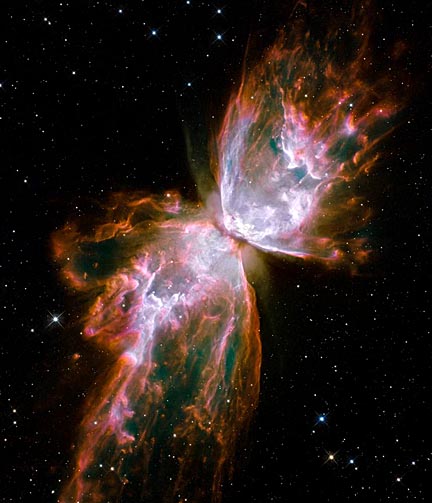

ASTRONOMICAL PHOTOGRAPHS.20 of what I consider the most interesting photographs from the Hubble space Telescope.
The following images are some of what I consider the most interesting of all astronomical images, borrowed from Nicolas Cheetham's excellent book Universe, 2005 by Smith-Davies Publishing. Mr. Cheetham's book contains many more outstanding images and I whole heartily recommend this volume to anyone interested in obtaining a first-class set of astro images.
Most of these images are of planetary nebulas, which I find to be beautiful because of the complexity of their structures and colors. (A planetary nebula is the glowing cloud surrounding an exploded star. They are called "planetaries" because they looked small and bright like the planets to early astronomers.)

This is the Butterfly or Bug planetary nebula 3,800 light years away in Sagitarius.
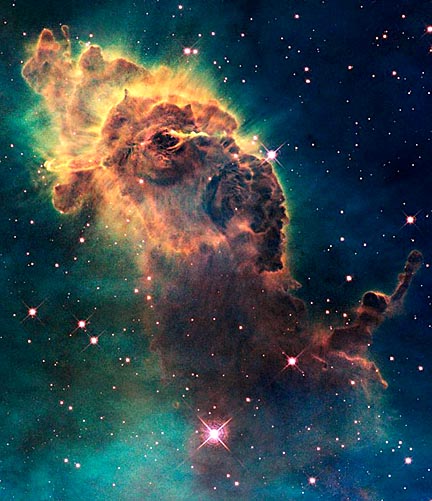
The Pillar of Creation nebula (STI name) is a cloud of gas and dust actively forming new stars. It's located in the Carina nebula and is 7,500 light years away.
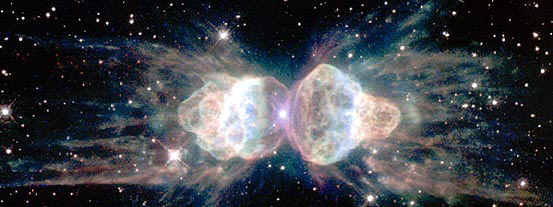
The Ant Nebula (Mz3), a planetary 3,000 light years away. One light year across, it produces streams of charged particles traveling up to 2,000,000 miles per hour.
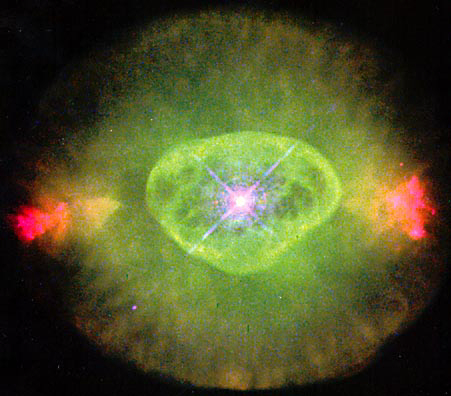
NGC 6826 (The Blinking Eye Nebula) is 2,000 light years away.

Cassiopeia A is a supernova remnant 10,000 light years distant. Heavy elements like iron can only be created by fusion processes that occur during supernovas. In this image red areas are clouds of newly formed silicon whereas blue indicates iron.

NGC 6543 (Cat's Eye Nebula) is one of the most beautiful planetaries. It resides 3,000 away. A series of earlier explosions created many shells of ejected material.
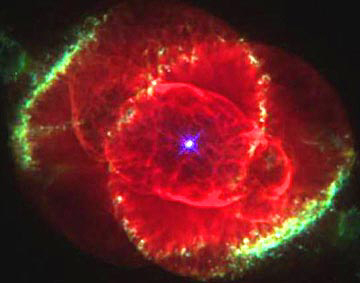
This earlier image of the heart of the Cat's Eye shows how different processing techniques can affect the appearnace of an astronomical object.
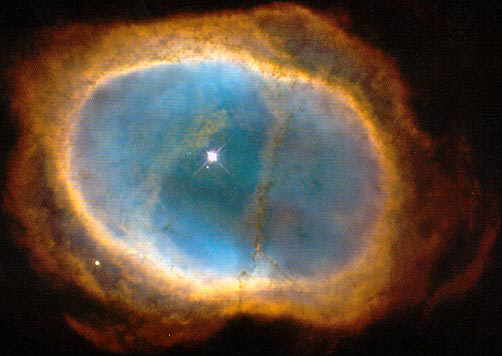
The Eight-Burst Nebula (NGC3132) is 2,000 light years away. I admit I never understood its name, it looks more like a soap bubble to me.
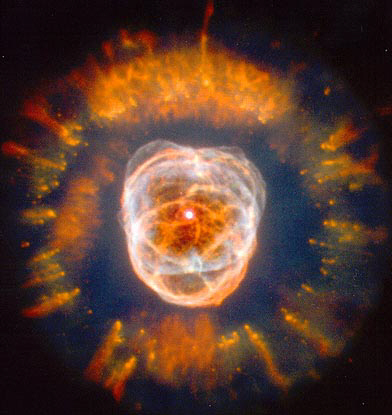
The Eskimo nebula, NGC 2392, is one of the most popular planetaries and is 5,000 lights years away. The Eskimo's face is more evident in photos taken with smaller instruments. The detail captured in this image hides the shape of the face.
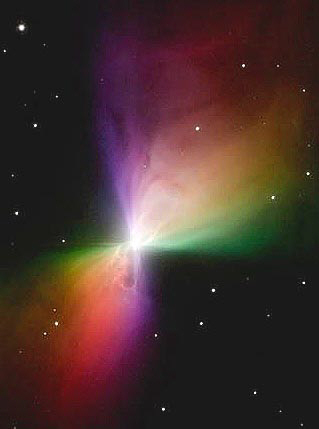
Boomerang Nebula, 5,000 light years away. This is an exploded star that is evolving toward a planetary nebula. The colors, regrettably, are false. They represent a mapping of the various orientations of polarized light from the gas cloud. In actuality the cloud is seen from light reflected off it from the central star. In unpolarized images it appears white.
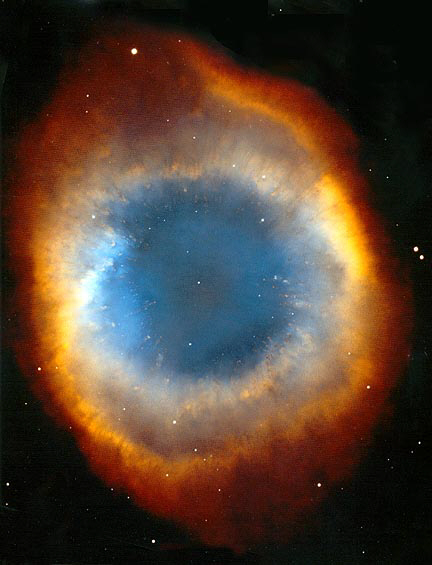
The Helix nebula, NGC 7293 - 450 lights years away, is arguably the grandest planetary in the heavens.
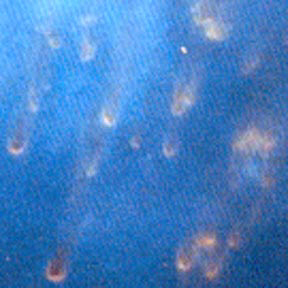
Clumps of slower-moving cold material are blasted into teardrop shapes by the much faster moving stellar wind from the central star that illuminates the entire nebula.
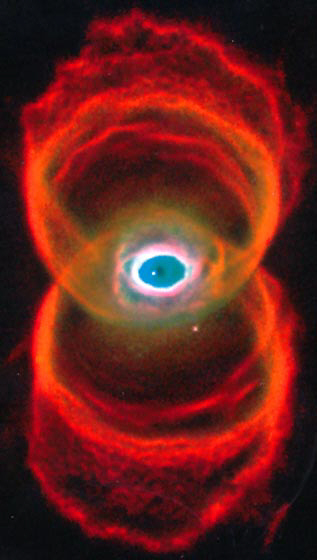
One of the eeriest planetaries is MyCn18, which is 8,000 light years away. While it's called The Hourglass Nebula, I always think of it as the Staring Eye Nebula.

Another supernova remnant, Kepler's SNR (SN 1604 - 13,000 light years away.) The star that created this nebula exploded in 1604. Today the nebula is 14 light years in diameter.
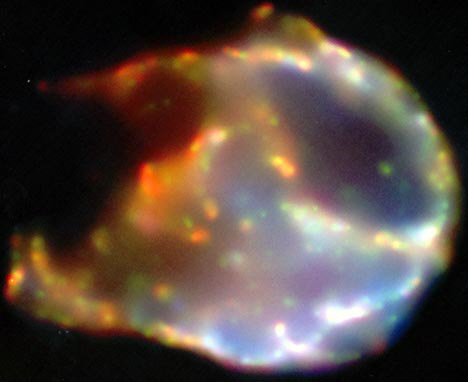
The right side of this expanding supernova remnant (N132D - 160,000 light years away) is smashing into a dense molecular cloud. The violent compression heats the boundary enough to emit light to create the glowing jellyfish shape seen here.

The Red Rectangle (2,300 light years away - HD 44179) is in the the early stages of becoming a planetary nebula. Currently, its star isn't hot enough to ionize the sloughed off gas and make it glow like a true planetary. Rather, we see it from light reflected off the gas.
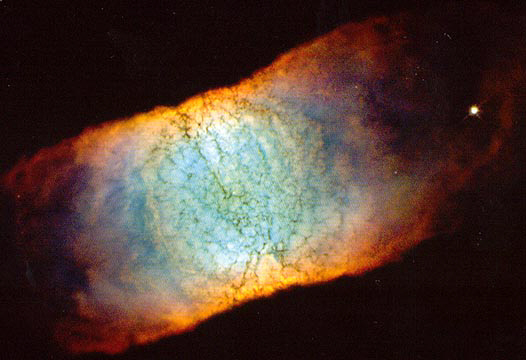
The 1,900 light year distant Retina Nebula (IC4406.)
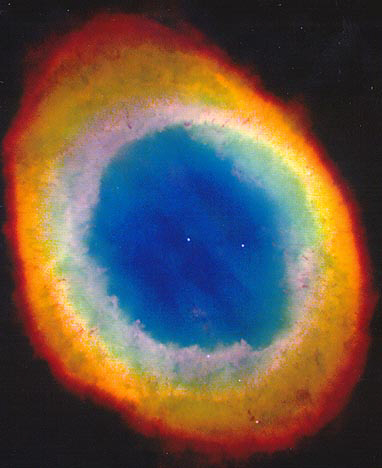
Second only to the Helix Nebula, and some would argue that it's first, the Ring Nebula is the standout planetary in the sky. Although at 2,000 light years away it's four times as distant as the Helix, it is much brighter and its ring shape is easily viewed in even small amateur telescopes. Both the Ring and the Helix are barrel-shaped, fortuitously oriented end-on for our viewing. Sideways, they might look more the the Retina Nebula.
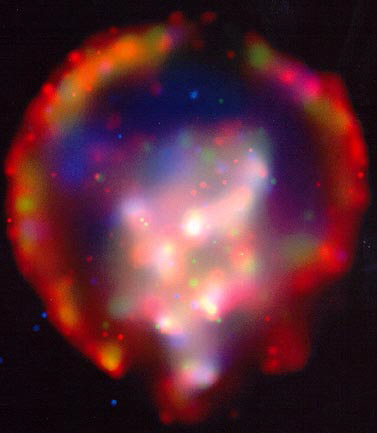
The 150-light year wide supernova remnant SNR 0103-72.6, 200,000 light years away in the Small Magellanic Cloud, a small irregular galaxy that orbits our galaxy.
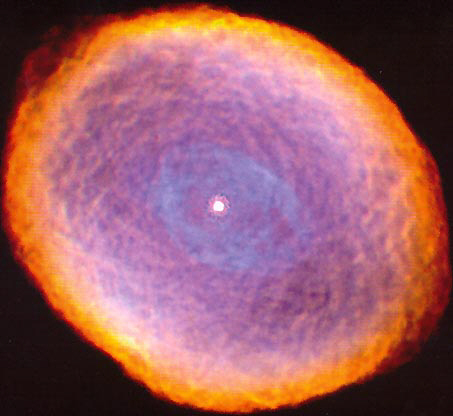
Two thousand light years away the Spirograph Nebula, IC 418, blazes in all its glory. A very young planetary, it's only 1/10 of a light year in diameter. (Be wary of my use of the word only, this nebula is 100 times the diameter of our entire solar system.)

The Twin Jet Nebula (M2-9 - 2,100 light years away) is 1,200 years old. Ten percent of all planetaries have bipolar shapes like this, the rest are spheres or doughnut-shaped.
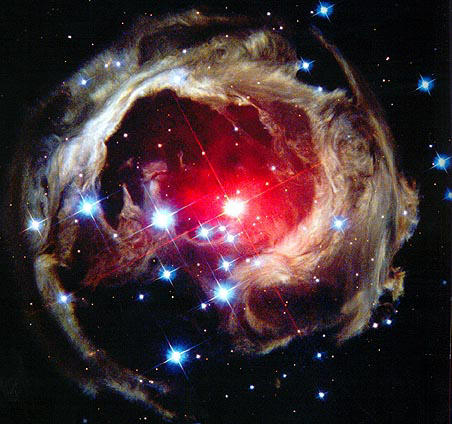
In the distant past star V838 Monocerotis exploded, blowing off enormous amounts of matter to create a fractured shell. In January of 2002 the star exploded again, providing enough light for us to see this shell. (Twenty thousand light years away.)

Fourteen thousand light years away, RCW 49 is a dense cloud 350 light years across out of which hundreds of stars are being born. The central zone has been blown clean of star-forming material by a dense cluster of super giant stars, allowing us to witness their blue glory.

While this image of the planetary nebula Abell 39 isn't from the Hubble, it came from the 138-inch telescope at Kitt Peak, It looks so good I couldn't resist adding it to the list. Note the galaxy showing through at two o'clock.
(Click
on main site
to browse 70 other topics ranging from exotic kaleidoscope designs to
the strange world of lucid dreaming.)